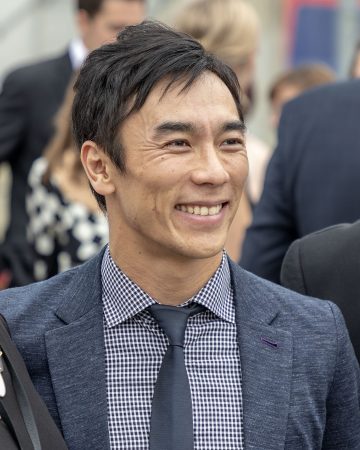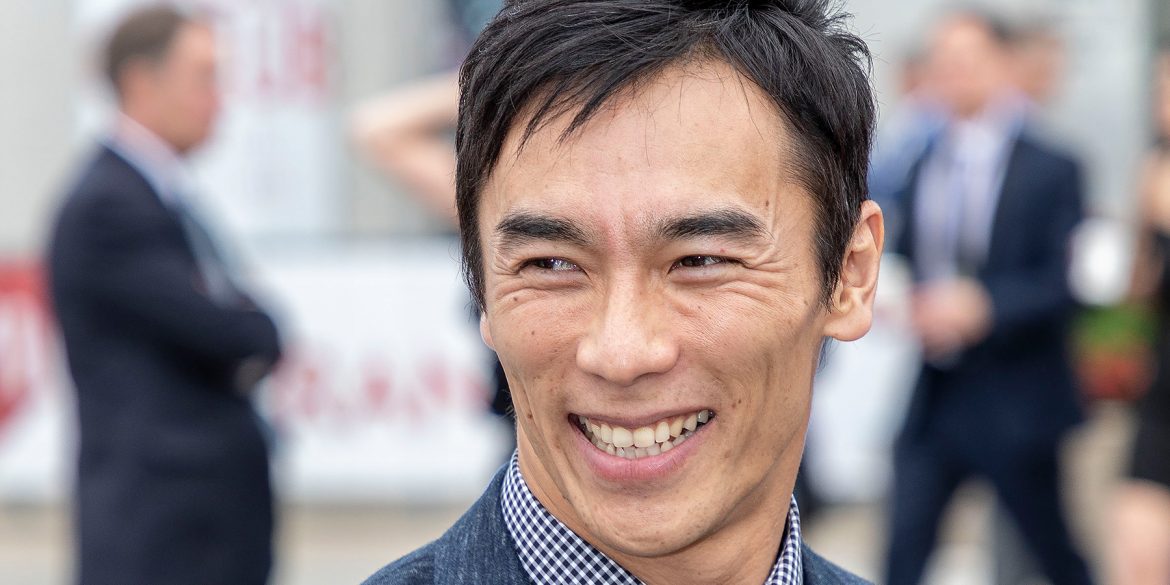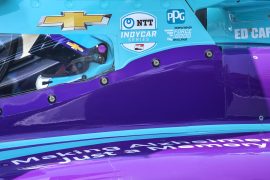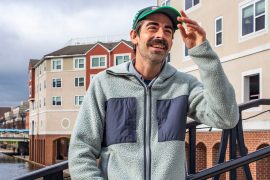
Takuma Sato has been racing all of his life. In high school and college he raced bicycles, then he switched to racing on four wheels and quickly rose up the ranks of Formula One, finally entering the IndyCar series in 2010. Last year he became the 71st champion of the Indianapolis 500, winning in dramatic fashion.
He’s a 41-year-old race car driver who has been chasing a personal dream of racing that began in 1987, when he saw his first race, the Formula One Japanese Grand Prix in Suzuka. He was just 10 years old, but that day changed his life. Now he returns to Indy as the defending champion of “The Greatest Spectacle in Racing” with a lot on his mind, but approaching it all with humility and the same level of passion and dedication.
I spoke with him on the phone as he prepares for his return to the Circle City. He has an inspiring story to tell, and nothing but love and admiration for the Indianapolis 500.
Richard McCoy: How did you transition from racing bicycles to racing cars?
Takuma Sato: When I was young all I had was a bicycle. This was the only tool that I could try to get some kind of speed: that sensation of racing. So, I was riding on my bicycle, and in my high school days I was competing quite seriously. When I went to the University I was still doing the bicycle, but then I read a magazine article that was talking about Suzuka Racing School.
You had to be under 20 years old to get into the racing school. I got in when I was 19, and the following year I had to leave it because of the age restrictions. So, that’s what for me was my first and the last chance to get into motor racing.
RM: Back then were your parents okay with you doing something so risky?
TS: Sure, my Mom was probably worried about it a little bit but then at the same time my parents were very supportive. They wanted me to do it properly with 100% commitment.
Obviously by the age of 20 I sort of understood how this sport business works and particularly for motor racing. In some places people started racing when they are 3 or 4 years old, and most of the professionals have started at least by the time they are teens. To get started at 20 years old, that’s quite late ….
However, you never know until you try, and I just didn’t want to give up before I tried it. My parents were very supportive of my passion. They said, “If you really want to do that, you go to do it.” I thought if I wasn’t very good then I would quit. That was the deal.
My motto is always “no attack, no chance.” It’s basically: nothing is impossible.
RM: What are you thinking about returning to Indy?
TS: I’m coming to the month of May as a defending champion of the Indianapolis 500, which is simply an unbelievable thing! Of course it was a real dream come true last year for everybody on the team. So I really wanted to say a big thank you to everyone who supported me. Particularly, my parents and all the sponsors.
I also really appreciate the fan support. I know many young people are inspired by the race, which could be a trigger for the next generation’s dreams … and if I influence someone that would make me more than happy because that’s where I was when I was young. I got energy from outside of the fence, where I was standing as a young boy, and then I kept my dream alive for over 10 years before I got my start racing.
I really think mine is a true story that if you really want to do something, and if you’re passionate, you can do anything.
RM: Many in the city and state spend the whole month getting ready for race day. How does Indy compare to other races?
TS: Having seen the world through racing, I know Indianapolis is exceptional. For example when I was in Formula One, I went to something like 17 countries in a season and what I saw country by country is obviously very different. The German Grand Prix, the Italian Grand Prix, Japanese Grand Prix, all the atmospheres are quite different and they are all great.
It’s just that the Indy 500 is beyond your imagination … the sheer scale. The appreciation that I have to participate in the race and be a part of it – it is absolutely a privilege. This is something I have never felt in any other venue or country. I really, really enjoy it, and the more time that I participate in it, the more appreciation I have.
Of course I always want to concentrate and to succeed 100% of the time in racing, but there is an extra feeling from the venue in Indy.
RM: Is there a tradition or ceremony before the start of the race that you enjoy the most?
TS: Sure, it’s the parade. It’s something that is a really nice build-up moment for the month. The whole city is really excited, you know 100,000 people cheering for the drivers and the teams. There aren’t many other races that have this kind of ceremony. I think it’s really a great interaction for the drivers and the fans. Such a great moment.
RM: How about after the race, what do you like to do?
TS: Traditionally after the race I gather with my team, sponsors, and a bunch of Japanese fans who come specifically for this race, and we all go to Fogo de Chao. This year we’ve already booked 50 people to go to the Fogo.
I’ve only missed going there once, and it was last year because we won. If we win again, of course I will have a lot of disappointment about not going. But if not I’ll look forward to going back to the tradition to have a fun time at the Fogo.
RM: What has the reception to your Indy 500 victory been like back in Japan?
TS: Year by year the Japanese audience for IndyCar is growing bigger, which is fantastic. But after the tragic earthquake and tsunami in 2011 IndyCar racing there stopped. It has been a really difficult time for us and we are still recovering. There are still 80,000 people living in temporary housing in Japan. I try to encourage the children and help as I can.
I’m particularly proud that I was able to bring the actual Borg-Warner Trophy to Japan as part of “Thanks Day” last year to celebrate our victory. This was a big deal, and the first time in 83 year history of the trophy that it has gone out of the country, which is amazing.
We went back to the city of Motegi, where the Indy Japan race was held for years and years. The race track was damaged by the earthquake and was just reopened on the day we returned. We did a demonstration with the actual winning Andretti Car and the original Honda engine, which was very important. Over 30,000 people came for my demonstration and heard the sound of the engine exactly as it sounded at the Indy 500.
RM: Do you think the magnitude of the event here in Indy translates well back to Japan?
TS: Many in Japan know that the Indy 500 is special but probably don’t fully understand it like the people who come to the race or those living here do. It’s a completely different culture. However, I was proud to replicate a small percentage of what the Indy 500 is back home on “Thanks Day,” and I think that’s why it was so special for me, an unbelievable moment.
At this year’s race, I think we will have the biggest attendance of Japanese fans ever …. That’s all because of last year.
RM: Do you feel any added pressure to win the Indy 500?
TS: Of course I want to win again, but to me it just doesn’t matter. Even if I don’t win it’s okay because I will entirely enjoy and be in the moment. It is such a special event so I really want to focus as well as I can and enjoy the entire month of May.




